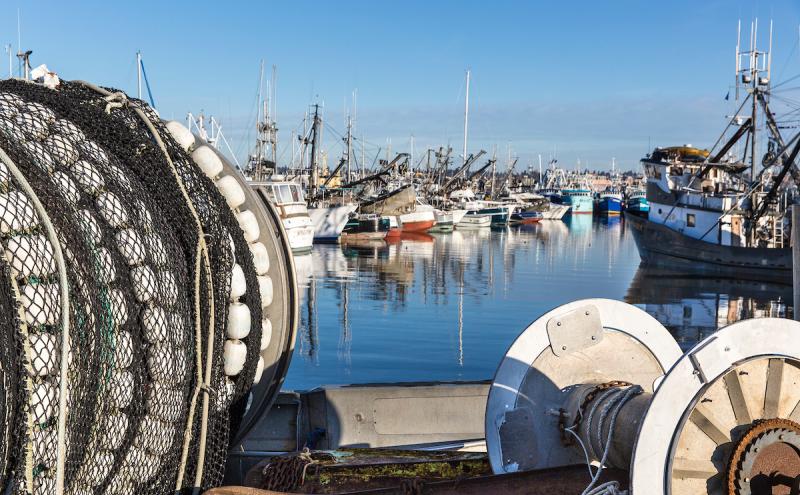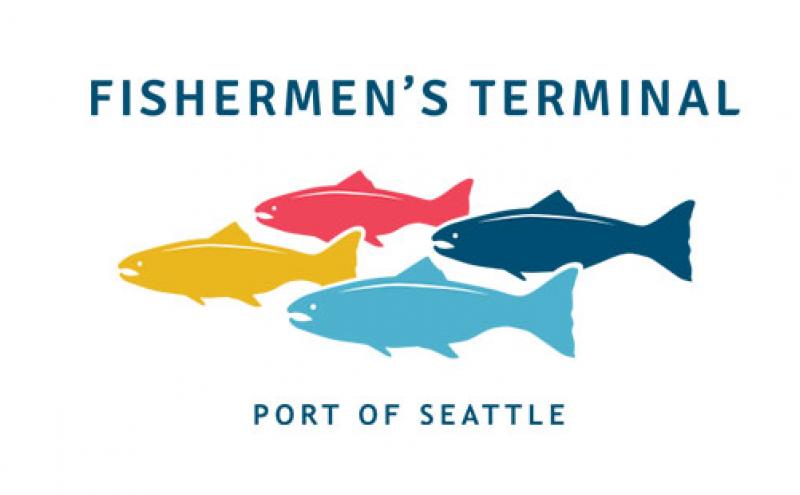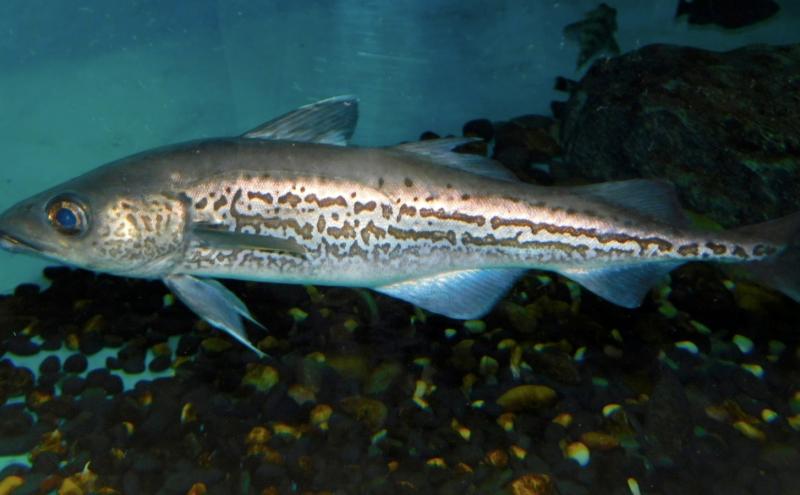
By Cathy Swift and Craig Morris, CEO of the Association of Genuine Alaska Pollock Producers (GAPP)
First written in 2021; updated in 2022 and 2025
The fishing season for Wild Alaska Pollock winds down at the end of October, when the North Pacific Fishing Fleet at Terminal 91 and Fishermen’s Terminal returns home with their catch.
Billed as “The World’s Best Whitefish,” Wild Alaska Pollock has been a nutritious meal for decades, best known as the main ingredient in fish sticks and surimi. But it’s so much more than that. It’s a mild tasting fish that’s plentiful, healthy, tasty, sustainable, and supports the local commercial fishing economy. Quite simply, Wild Alaska Pollock checks all of the boxes.
The Alaska pollock or walleye pollock (Gadus chalcogrammus) is a marine fish species of the cod family Gadidae. It is a semi-pelagic schooling fish widely distributed in the North Pacific with largest concentrations found in the eastern Bering Sea.
The Pollock fishing season for local fishers in Alaska’s Bering Sea runs a good part of the year:
- A season from mid January to the end of April
- B season from early June to the end of October

Pollock is the star of a new mural decorating Pier 91 on the Glacier Fish Company headquarters. The marketing organization for the Wild Alaska Pollock industry, The Genuine Alaska Pollock Producers (GAPP), commissioned a mural by local artist Kyler Martz on the north face of the building, visible to thousands of cruise passengers every year and to the Magnolia neighborhood. There is also a 100’ long mural on the fence that runs along the side of the building that highlights the compelling attributes of the amazing fish.
See an interactive sketch of the mural
GAPP wants to “school” you (get it?) on Wild Alaska Pollock with a few facts (and recipes):
1. Pollock is caught wild in Alaska
- It comes to you direct from the pristine icy waters of Alaska — only fish caught there can be labeled as Wild Alaska Pollock
- It’s the most consumed wild-caught whitefish in the world and the #3 consumed fish in the United States
2. It fuels the economy of Washington and the North Pacific Fishing Fleet
The largest concentrations of pollock are found in the Bering Sea and are harvested by the North Pacific Fishing Fleet based at Terminal 91.
- Pollock is one of the top 10 seafood exports from the Seattle and Tacoma Harbors
- Pollock and surimi production doubled in 2021 to 32,804 metric tons, driven by consumer demand
- Pollock and pollock roe are widely consumed in Asia; Japan takes 37 percent of the surimi harvested from Alaska, and South Korea receives about 33 percent
(Source: Alaska Pollock: With strong global demand, U.S. production ramped up in 2021; National Fisherman)
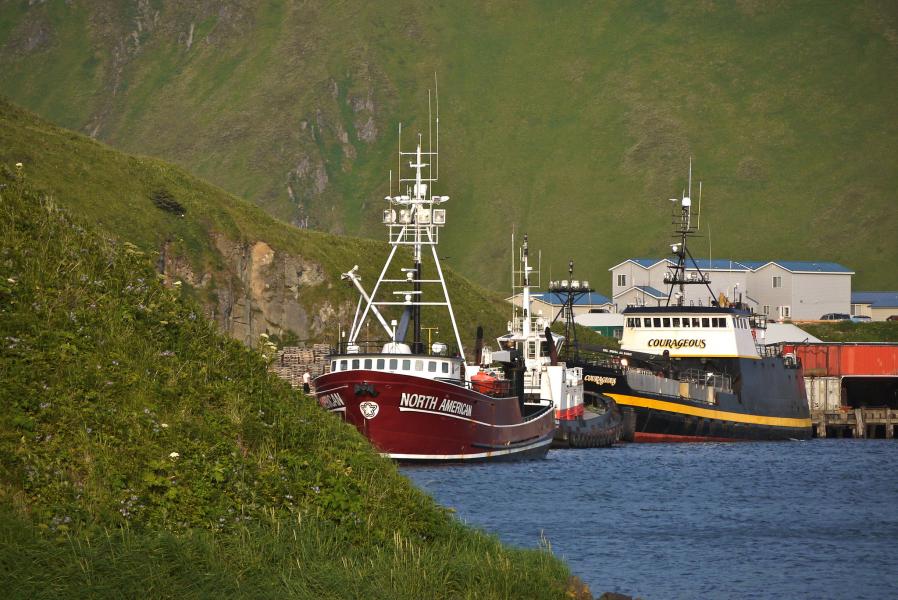
3. Eating Pollock is a great choice to help protect the environment
If you want to minimize your overall environmental footprint, Wild Alaska Pollock is a climate-smart protein choice thanks to abundant wild populations that are responsibly managed and sustainably harvested.
Pollock comes from the most abundant, certified-sustainable fishery in the world and it’s independently certified by both the Marine Stewardship Council and the Alaska Responsible Fisheries Management program as maintaining a strong population of fish year in and year out. These certifications, crucial in export markets, measure against a standard of best practices for how fisheries are sustainability managed and provides a high level of assurance that the seafood you purchase is verified as a responsibly managed fishery, harvested legally, and is traceable back to its source.
Separately, because consumers are starting to look at sustainability in more ways than fisheries management, the Wild Alaska Pollock industry funded a study to determine what the carbon footprint of Wild Alaska Pollock actually is when compared to other proteins. The study, conducted by the world-renowned consultancy Quantis International, looked at several key impact categories such as global warming potential, energy use, use of land and water resources, and waste outputs. When the results were released, it showed that Wild Alaska Pollock is not only good for you, but good for the planet too!
The findings concluded that Wild Alaska Pollock fillet has an impact of 3.77 kg CO2-eq per kg of protein, significantly lower than comparative statistics reported for other protein sources.
- Wild Alaska Pollock: 3.77
- Chicken: 12.50
- Pork: 19.65
- Plant-Based meat: 20.83
- Beef: 115.75
(Sources: Wild Alaska Pollock Is Among the Most Climate-Friendly Proteins in the World, GAPP; Life Cycle Assessment of Wild Alaska Pollock Final ISO LCA Report, Quantis)
According to the National Oceanic Administration (NOAA) Fisheries, the Alaska pollock fishery is one of the cleanest in terms of incidental catch of other species (less than 1 percent). (Source: Alaska Pollock, NOAA Fisheries)
4. Pollock is one of the top 20 most nutritious foods in the world
Wild Alaska Pollock is low-fat, protein-rich, heart-healthy, high in vitamin B-12, and loaded with omega-3 fatty acids. And it’s also mercury safe so can be eaten more frequently than other species of fish.
Wild Alaska Pollock compares favorably to other protein sources.
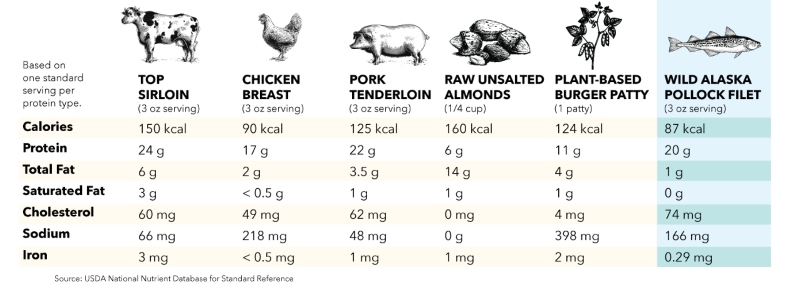
5. It’s delicious, versatile, and popular with top local chefs
Pollock is also the star of fish and chips, fish tacos, and fish sandwiches. It’s mild tasting, firm, and not fishy for many people who don’t like oily fish like salmon. Plus, it’s good for you and good for the planet. A win-win!
Get schooled on how to prepare pollock with a few great recipes from Seattle Chefs:
Lucky Louie Fish Shack
You can find Wild Alaska Pollock in the Fish and Chips at Seattle chef Kathy Casey’s Lucky Louie Fish Shack in Central Terminal at Seattle-Tacoma International Airport.
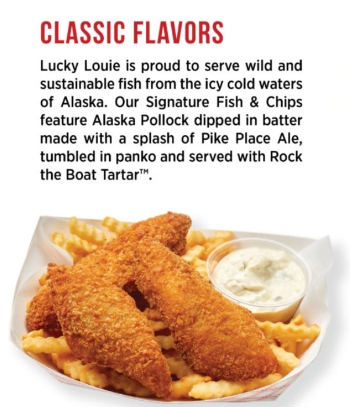
The Fork & Fin
The Fork & Fin is more than just a wildly popular food truck, it’s a Seattle institution! Spawned by Trident Seafoods. Make these famous food truck tacos at home.
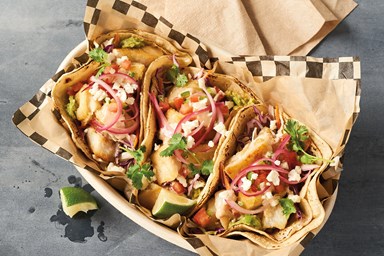
Chef Thierry Rautureau
James Beard Award-winning "Chef in the Hat" Thierry Rautureau (who had a restaurant at SEA Airport and passed in 2023) created this magical creation that will elevate your cooking game!
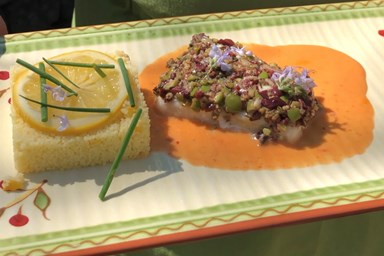
This quintessentially French dish features a perfect protein!
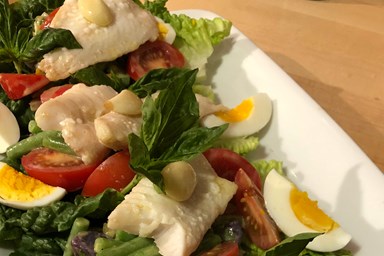
Top photo: Copyright George Berninger Jr.,CC BY-SA 4.0, Wikipedia

